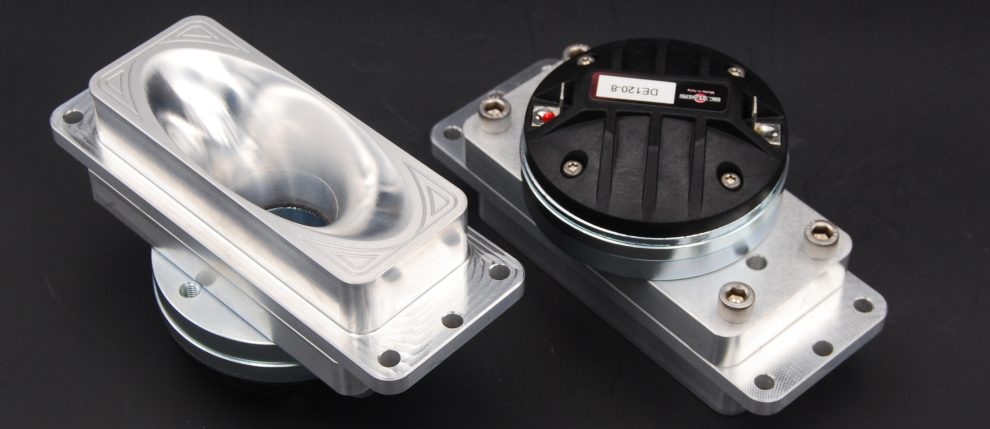One of my pet peeves is how the idea of designing things has become the end of the process of manufacturing for so many. I guess if I sat in a cubicle and all I knew was based on classroom training and I had never dipped a toe into a manufacturing facility I could think this way. Or if I was silly enough to think manufacturing began and ended with my scintillating but academic
design genius capabilities as I sat behind my monitor. So then this bit of enlightened design meanders it’s way through the process where hopefully someone with a bit of sense will see it before it gets out to the people who will be asked t0 make it.
Such were the thoughts going through my mind this week as I regarded a part that I had been sent to quote on. Now keep in mind these guys know what I have for equipment and they thought that this was a part suitable for milling.
I am sure that all the plugin connections were dimensionally correct and that sufficient space in the “box” was allowed for components according to precise sizes garnered from somewhere. The problem is however that this designer had absolutely no idea of what is required to allow for milling this kind of part. First off this is impossible to mill unless done as four or five pieces that would be assembled with fasteners or perhaps welding. It could be done with some of those new fancy metal powder deposition laser doo-dads. Except for the problem of how to tap occluded holes in some of the round bosses I think it would be possible there. But then again this would never yield quick or cheap parts for something that was to be mass manufactured. You could afford to make one this way if it was to be used as a pattern for molding. But then you would have to drill and tap those holes on those bosses on every casting and quite frankly I don’t know a way that this would be possible except with a through hole which is not indicated based on the part file. In any case I am not familiar enough with casting to know if this is a feasible design.
What I am going to do is go through this part and show reasons why this cant be milled. It is my hope that perhaps this will get some of you who are not familiar with machining to reconsider how you go about designing. This guy spent his time designing something that cant be machined and at the very least he wasted his time and the time of shops sent RFQ’s.
Join me as we venture into the never never world of inexperience.


What’s the big deal? It’s easy to machine it–just use sinker EDM. No problem on the lack of draft on the walls. You might need a 4th axis to cut the threads, and you’ll need to be creative on the undercut pocket. Plus you’re going to have to machine a whole bunch of electrodes, but you can get it all done. You can even do it in solid carbide, with sub-micron repeatability, if he’d like. What do you figure, half a million dollars per part?
Seriously: Tell the customer that if he gives you the complete assembly, you’ll re-engineer the part for him for him… but it’s not going to be easy. The ridiculous wall thicknesses hint that he needs full thermal and FEA analysis–and to do the thermal right, he’s going to need to account for individual component dissipation on the PCB assembly.
(The bosses look, to me, like PEM inserts.)
Hi Evan,
🙂 I like that Sinker EDM bit. I don’t think though that the sinker EDM could get the tapped holes right in the round bosses and I don’t see how it could erode around stuff hidden by the round bosses. Maybe the Sinker idea would work with a bunch of setups but I am not all that familiar with the process other than knowing the very basics of how it works. Do you think considering what I said above it would do it? And the holes still have to be tapped from the inside. I think the designer did want big chunks of metal for a heat sink. I would have been a sub to a sub and when I told the sub in line before me all this he turned the job down so the opportunity for my $500,000.00 job has sadly gone away.
I wondered about the PEM inserts too but since the guy did not send an assembly nor was it specified as such in their communications I chose to believe they thought this could be done from solid stock. I will remember the re-design idea though for the next time this kind of thing happens.
“Build it and they will come.”
Yeah, they must have missed the course on Design for Manufacturing and Assembly (DFMA).
Somebody is going to get humbled.
You mean there IS a course for that?
Yep. There is even software that will analyze your part geometry and help you determine the best way manufacturing methods.
Boothryod Dewhurst DFMA
http://www.dfma.com/software/dfa.htm
http://www.dfma.com/software/dfm.htm
I taught this software at one of my old jobs in the past. Pretty interesting tool. If you tie in your costs you can look at the costs across multiple locations (Plant A or Plant B or casting vs weldment, etc.